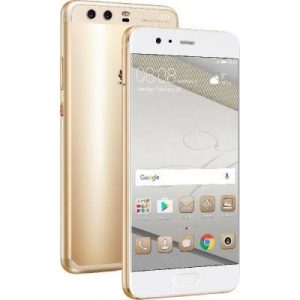Huawei unveiled their new flagship smartphones, the P10 (5.1-inch FHD display) and P10 Plus (5.5-inch 2K IPS display), during Mobile World Congress in Barcelona earlier this year.
Huawei says that the P-series has always been a culmination of art and technology and this is reflected in the P10’s design. As part of this, the company has partnered with Pantone to create two special colour options for both the P10 and P10 Plus, namely “Dazzling Blue” and Pantone’s colour of the year for 2017 – “Greenery.”
Other colours include Rose Gold, Prestige Gold, Dazzling Gold, Mystic Silver, Ceramic White and Graphite Black.

P10
New colours are not the only highlights of the new handsets, Huawei has also included a second generation rear-facing Leica dual-camera setup on each device as well as the first Leica made front-facing camera to be included on a smartphone.
The rear camera setup consists of a 20MP monochrome lens and a 12MP RGB lens, while the front facing camera is an 8MP shooter.
The camera upgrades are not only on the outside but continue to the software. The P10 and P10 Plus now has a portrait mode which lets you take a picture of a person or object and have a bokeh effect in the background, similar to that found on the iPhone 7 Plus. For the first time on a Huawei phone, you can now also take monochrome pictures with a bokeh effect.
Huawei has also partnered with GoPro to integrate the company’s video editing app “Quik” into the gallery on the P10 and P10 Plus (and will be coming to other Huawei handsets which get the EMUI 5.1 update). The main attraction is a Highlights feature that creates a video based on photos and videos that you’ve taken complete with background music.
Software is clearly a big focus for Huawei as both handsets include what it calls “Ultra Response” and “Ultra Memory”.
“Ultra Response” predicts where you’ll place your finger on the phone’s display and helps optimise the display’s response time putting it on par with Apple’s touchscreen responsiveness according to Huawei executives.
“Ultra Memory” focuses on freeing up RAM and improving the phone’s overall efficiency and speed. It does this by learning your habits and predicting which app you might open next (based on past usage) and which apps you won’t use again. By doing this it can close certain apps thus freeing up memory, and it can launch apps up to 30% faster.
On the hardware side, the most noticeable change with the P10 and P10 Plus is that the fingerprint scanner is no longer on the back of the device but can now be found in the front. As with the iPhone 7, Huawei’s new home button is not a physical button in the sense that it does not move, unlike the iPhone though, the fingerprint scanner also lets you swipe and tap in order to show most recently used apps, go back a page or to the home screen and to access Google Assistant.
Overall, the P10 and P10 Plus are both good looking, capable handsets which bring improvements to the great things that Huawei has done with the P9 series, however it’s missing the waterproofing which is found on many flagship handsets.
The Huawei P10 is available from R9 479.01 while the P10 Plus is available from R11 399.00



